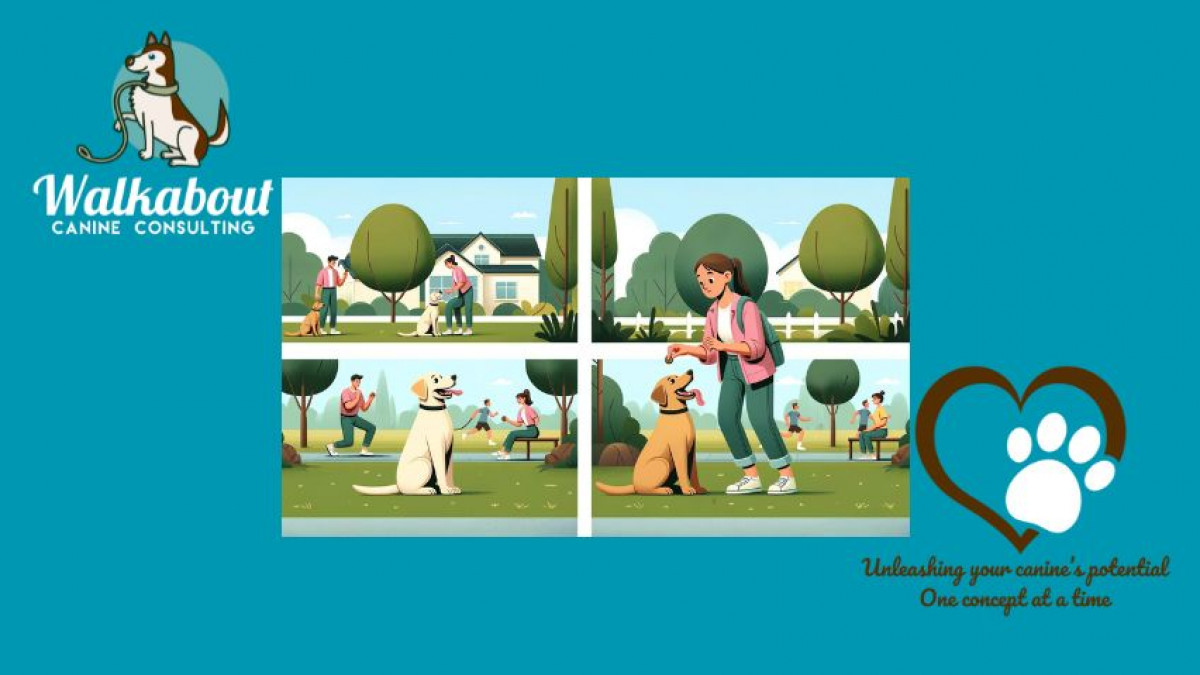Positive Dog Training & Behaviour Blog | Walkabout Canine Consulting
Unleashing your dogs potential, one concept at a time
Dogs Training Tip Sheet

Teaching Skills out of the Situation
Dog Training Tip Sheet
Teaching Skills Out of the Situation
Training your dog to perform skills reliably, even in distracting environments, is a process that requires patience and consistency. Here’s how to ensure your dog understands and masters commands before adding in harder distractions.
1. Start with a Quiet Environment
Begin training in a calm, distraction-free environment, such as your living room or backyard. This helps your dog focus solely on engaging with you and learning the new skill.
Why it matters: Dogs learn best when they are not overwhelmed by external stimuli.
Example: Teach basic commands like “sit,” “stay,” and “come” in a quiet space.
2. Use High-Value Rewards
Use treats, toys, or praise that your dog loves. High-value rewards motivate your dog to learn and repeat desired behaviours.
Why it matters: Rewards create positive associations with the cues.
Example: Use small pieces of chicken or cheese as treats.
3. Short, Consistent Sessions
Keep training sessions short (3-10 minutes) but frequent. Consistency is key to reinforcing learned behaviours.
Why it matters: Short sessions prevent your dog from becoming bored or frustrated.
Example: Train for 3 - 10 minutes, three times a day. (depends on age)
4. Gradually Introduce Distractions
Once your dog reliably performs the skill in a quiet environment, slowly introduce mild distractions.
Why it matters: Gradual exposure helps your dog learn to focus amidst distractions.
Example: Train in a quiet park or with the TV on at low volume.
5. Increase Difficulty Incrementally
Gradually increase the level of distraction in training environments. Move from mild distractions to more challenging ones.
Why it matters: Dogs need to generalize the behaviour to different settings. Dogs learn in pictures.
Example: Progress from training in your backyard to a quite park and then to busy park.
6. Practice Patience and Stay Positive
Training takes time. Stay patient and keep a positive attitude to encourage your dog.
Why it matters: Dogs respond better to positive reinforcement than to punishment.
Example: Celebrate small successes and avoid getting frustrated.
7. Proofing the Behaviour
Proofing means practicing the skill in various environments and situations to ensure reliability.
Why it matters: Proofing ensures your dog can perform the skill anywhere, anytime.
Example: Practice commands at home, at the park, and during walks.
8. Regular Refreshers
Even after your dog masters a skill, regular refresher training helps maintain the behaviour.
Why it matters: Skills can fade without regular practice.
Example: Incorporate training into daily routines, like during walks or playtime.
By following these steps, you can effectively teach your dog new skills in a controlled manner and gradually build up to performing them amidst more challenging distractions. Happy training!
Check out our digital courses for do it yourself or reach out and let chat about how I can help you with a success plan for you and your dog.
Categories: : dog behaviour, dog training, dog walking, my dog is pulling on leash
 Sylvia Koczerzuk Koczerzuk
Sylvia Koczerzuk Koczerzuk 
